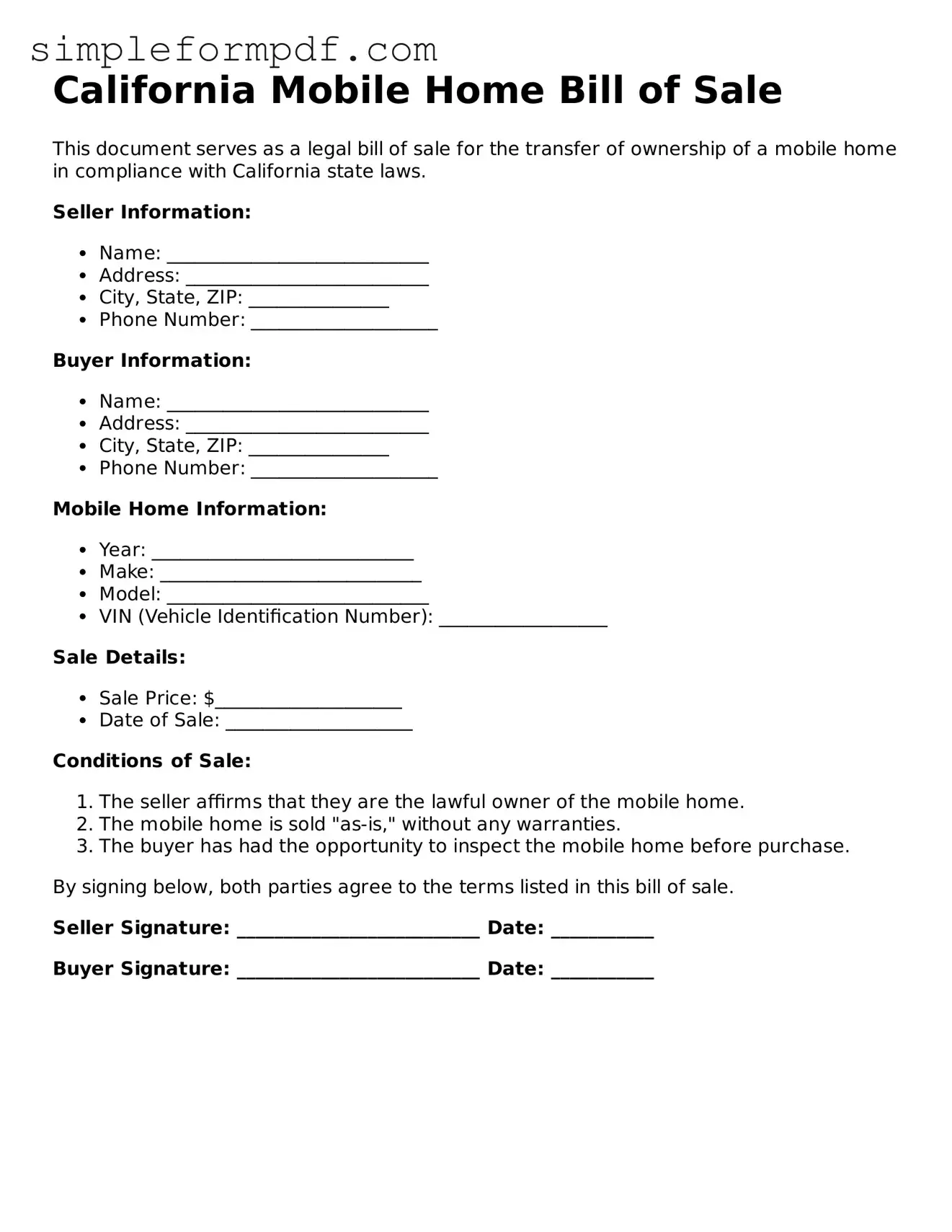California Mobile Home Bill of Sale
This document serves as a legal bill of sale for the transfer of ownership of a mobile home in compliance with California state laws.
Seller Information:
- Name: ____________________________
- Address: __________________________
- City, State, ZIP: _______________
- Phone Number: ____________________
Buyer Information:
- Name: ____________________________
- Address: __________________________
- City, State, ZIP: _______________
- Phone Number: ____________________
Mobile Home Information:
- Year: ____________________________
- Make: ____________________________
- Model: ____________________________
- VIN (Vehicle Identification Number): __________________
Sale Details:
- Sale Price: $____________________
- Date of Sale: ____________________
Conditions of Sale:
- The seller affirms that they are the lawful owner of the mobile home.
- The mobile home is sold "as-is," without any warranties.
- The buyer has had the opportunity to inspect the mobile home before purchase.
By signing below, both parties agree to the terms listed in this bill of sale.
Seller Signature: __________________________ Date: ___________
Buyer Signature: __________________________ Date: ___________
